Most people never think about how they breathe at night. Then morning arrives with a dry mouth, a sore throat, and a partner who complains about snoring. Myotape has entered this conversation by offering a simple, skin-friendly way to encourage nasal breathing during sleep, and many are curious about real results. Before-and-after stories can be persuasive, yet they benefit from a careful look at what changes are realistic, how to measure them, and how to begin safely.
This guide brings together practical methods, measured expectations, and user experiences from homes, clinics, and sleep labs. If you want to see whether Myotape could shift your nights toward quieter, calmer sleep, you will find a clear plan below.
What is Myotape and how it works
Myotape is an elastic adhesive that sits around the mouth rather than across it. The circular design draws the lips toward each other through gentle tension. The lips can still part if needed, and there is no complete seal over the mouth.
The aim is simple. When the lips rest together, the body tends to default to nasal breathing. That shift can influence snoring, mouth dryness, drooling, and even the position of the tongue at rest. It is not a forceful clamp. Think of it as a training aid for a habit your body already knows.
The tape is commonly used during sleep, although many people first practise with short daytime sessions to get used to the sensation. Parents sometimes use child versions under the guidance of a clinician, often alongside myofunctional therapy.
Before: common signs of mouth breathing
Before-and-after often starts with a list of problems you want to improve. Mouth breathing at night can show up in a cluster of ways:
- Dry mouth or dry lips on waking
- Snoring that worsens when lying on the back
- A raspy throat in the morning
- Waking several times at night without clear cause
- Excess drooling on the pillow
- Morning halitosis
- Higher leak rates for people on CPAP
- Jaw hanging open during sleep, noticed by a partner
- Tiredness that feels out of proportion to time in bed
Not every item applies to everyone. Even one or two consistent signs can be enough reason to try a structured trial, as long as nasal breathing is comfortable and safe.
After: changes many users report
People usually notice the small wins first. Over a few nights the improvements sometimes gather pace.
- Less snoring, or snoring that stops after turning on your side
- Reduced mouth dryness and a fresher taste on waking
- Fewer wake-ups and a calmer return to sleep
- Lower CPAP leaks and more stable pressures
- Less drooling and lip cracking
- Partners report quieter nights and fewer mouth-open moments
- Greater nose comfort through the day, a sign of habit carryover
A portion of users notice results from night one. Others need two to three weeks while the new habit settles in.
What the research and clinic reports suggest
The evidence base for mouth taping is still growing. Published trials are small, and products vary, so outcomes are best viewed as indicators rather than guarantees. That said, several themes appear across pilot studies and clinical audits:
- Primary snorers and people with mild sleep disordered breathing often reduce snoring time and intensity when they keep the mouth closed
- Some participants with mild obstructive sleep apnoea see lower AHI during taped nights, although not everyone benefits to the same extent
- People using CPAP frequently see reduced leak, which can improve comfort and adherence
- Dry mouth scores trend down, and partners report fewer disturbances
Mechanisms are plausible. Nasal breathing supports nitric oxide release in the nose, encourages tongue-to-palate posture, and helps stabilise the airway. These changes can quieten tissue vibration and collapse. Results vary with nasal health, body position, alcohol intake, and body weight.
A practical snapshot of before-and-after markers
The table below illustrates what many users track at home. Values are examples, not promises, and your pattern may differ.
| Marker | Before Myotape | After 2 weeks | After 8 weeks |
|---|---|---|---|
| Snoring minutes per night | 60 to 120 | 20 to 60 | 10 to 40 |
| Partner-rated loudness (0 to 10) | 7 to 9 | 3 to 6 | 2 to 5 |
| Morning mouth dryness (0 to 10) | 6 to 9 | 2 to 5 | 1 to 4 |
| Night awakenings | 3 to 5 | 1 to 3 | 0 to 2 |
| CPAP leak rate | Frequent large leaks | Fewer large leaks | Rare large leaks |
| Subjective daytime energy | Low to middling | Middling to good | Good |
Scores like these are easiest to track when you commit to a defined trial with the same bedtime, similar sleeping position, and steady alcohol and caffeine habits.
How to run your own 14 day trial
A short, structured trial keeps things simple and gives you data to compare.
- Get baseline data for three nights with no tape
- Use a snoring app or smartwatch with sound analysis
- Ask your partner to log snoring on a 0 to 10 scale
- Rate mouth dryness, throat comfort, and morning energy
- If you use CPAP, record leak rates and AHI from the device
- Start with two daytime sessions of 15 minutes while reading or watching TV, just to get used to the tape
- Move to nights
- Night 1 to 3: wear tape for the first half of the night
- Night 4 onward: wear it for the full night, if comfortable
- Keep a simple diary each morning with five quick ratings:
- Snoring loudness
- Wake-ups
- Dry mouth score
- Perceived sleep quality
- Daytime energy at 10 a.m.
At the end of two weeks, compare your logs with the three baseline nights. Look for trends, not perfection.
Safety first: who should speak to a clinician
Myotape is designed to sit around the lips and leaves an opening at the centre, which many people find reassuring. Even so, certain situations call for medical advice before trying it:
- Persistent nasal blockage or a suspected structural issue in the nose
- Severe obstructive sleep apnoea that is not under active treatment
- Chronic respiratory conditions that affect airflow
- Vomiting or nausea risk
- Significant anxiety or claustrophobia related to face coverings
- Skin conditions or strong reactions to adhesives
- Recent oral surgery or dental implants under healing instructions
- Young children without clinician oversight
If you notice air hunger, chest discomfort, or a panicky feeling at night, remove the tape and pause the trial until you have guidance.
Getting started without drama
Changing breathing habits at night is easier with a calm, methodical start.
- Check nasal airflow
- Try gentle nasal rinses with saline in the evening
- Avoid strong decongestants unless prescribed
- Test the tape during the day while relaxed
- Patch test a small piece on your forearm to rule out skin reaction
- Prepare your lips with a drop of non-petroleum balm twenty minutes before bed
- If you have facial hair, trim just enough to improve adhesion around the mouth
- Place the tape carefully so it encircles the lips, leaving the centre free
- Keep water by the bed and remind yourself you can part the lips if needed
Aim for consistency over perfection. It is normal for the first few nights to feel unfamiliar.
What to pair with Myotape for stronger results
Mouth posture often reflects more than one factor. Combining Myotape with supportive habits can produce better outcomes.
- Nasal care: saline rinses, allergen control in the bedroom, and a suitable pillow height to keep the neck neutral
- Oral posture drills: light myofunctional exercises that build tongue-to-palate rest posture and lip seal
- Positional sleep: side sleeping or a body pillow that discourages supine time
- CPAP users: a nasal mask plus Myotape can reduce mouth leaks and improve comfort
- Weight management: even small reductions can ease upper airway collapse
- Alcohol timing: avoid late-evening drinks that relax airway muscles
- Gentle breath work before bed: slow nasal breathing to settle the nervous system
These are small hinges that can swing big doors when used together.
Case snapshots from everyday life
-
Primary snorer, mid 40s
- Baseline: loud snoring most nights, dry mouth, three wake-ups
- Two weeks with Myotape: snoring minutes fell by about half on the snore app, dryness dropped from 8 to 3, partner said nights felt peaceful
- Added side sleeping and a lower pillow, gains held at the eight week mark
-
Mild sleep apnoea, CPAP user
- Baseline: frequent mouth leaks with a nasal mask, woke to adjust straps, daytime foggy feeling
- Myotape nights: CPAP software showed reduced large leaks, AHI more stable, sleep felt less fragmented
- Reported easier mornings and fewer adjustments to the mask
-
Teen with orthodontic concerns, clinician-led plan
- Baseline: low tongue posture, mouth open during reading, dry lips
- Integrated approach: daytime posture drills, nasal hygiene, Myotape during sleep
- After three months: stronger lip seal by day, less drooling at night, improved compliance with orthodontic guidance
These are snapshots, not lab-grade proofs, yet they mirror patterns seen in clinics.
Troubleshooting common hurdles
- Tape comes off during the night
- Clean the skin, reduce lip balm, press the tape for a few seconds to warm the adhesive, try a fresh piece if you wake
- Nose feels blocked at 3 a.m.
- Sit up, hydrate, remove the tape if breathing feels strained, resume when nasal patency is stable
- Anxiety at lights out
- Wear for the first half of the night only, add a five-minute pre-sleep breath routine, remind yourself you can part the lips
- Skin irritation
- Rotate placement slightly, use a kinder skincare routine, take a night off if the area looks inflamed
- Saliva pooling
- Slightly reposition the tape and avoid eating heavy meals right before bed
Small adjustments usually solve early friction points.
How long to see a real shift
A fair expectation looks like this:
- Night 1 to 3: get used to the sensation, small wins may appear
- Week 2: clearer signs, quieter nights, less dryness
- Week 4: habit feels easier, morning energy improves
- Week 8 and beyond: benefits tend to stabilise and carry into daytime posture
Those with chronic nasal issues or higher body weight may need more time or extra support to see strong changes.
Measuring what matters, the simple way
Numbers help, but keep it light. A five-line diary can tell you more than a screen full of graphs.
- Snoring loudness: 0 to 10
- Wake-ups: count
- Dry mouth: 0 to 10
- Sleep quality: 0 to 10
- Energy at 10 a.m.: 0 to 10
If you like gadgets, a snore app and your CPAP data can add detail. Still, your partner’s comments and your own sense of rest often capture the result that counts.
Myths and fair cautions
- Myth: taping the mouth is dangerous for everyone
- Reality: Myotape sits around the lips and allows mouth opening, and many people use it comfortably. Suitability depends on individual health, so screening is wise.
- Myth: results should be instant
- Reality: some change can appear overnight, yet habit retraining and nasal care usually take a few weeks
- Myth: it replaces medical care
- Reality: it can complement treatment, not replace diagnosis or therapy for conditions like moderate to severe apnoea
Moderation and common sense go a long way.
Frequently asked questions
- Can I use it with a cold
- If your nose feels blocked, wait until breathing through the nose is clear again
- Is it safe during pregnancy
- Many expectant mothers prefer minimal changes to sleep routines; ask your clinician before starting anything new
- What about bruxism or a night guard
- Some users wear both. Discuss with your dentist if you clench or grind
- Does facial hair prevent use
- Light trimming around the mouth improves adhesion
- How do I remove the tape without irritating the skin
- Peel slowly while supporting the skin with a fingertip, or loosen with a little warm water
- Can children use Myotape
- Only with professional guidance, ideally as part of a broader plan that addresses oral posture and nasal health
Care, hygiene, and practicalities
- Store in a cool, dry place
- Use clean, dry skin at bedtime
- Avoid heavy creams on the perioral area just before use
- Rotate placement slightly to give the skin a rest
- Replace tape as directed by the manufacturer for consistent adhesion
Small habits protect the skin and keep the experience comfortable.
A simple plan to test change
- Pick a 14 day window with stable bedtime and minimal travel
- Record three baseline nights
- Practise twice during the day for comfort
- Move to half-night use, then full nights
- Log five metrics each morning
- Review at day 15 and decide whether to continue, adjust, or seek extra support
Quiet nights are not a luxury. They are a foundation for better thinking, steadier mood, and more reliable energy. With a careful start, Myotape can be part of that foundation for many people who want to shift from mouth breathing to a calmer, nasal-led pattern.











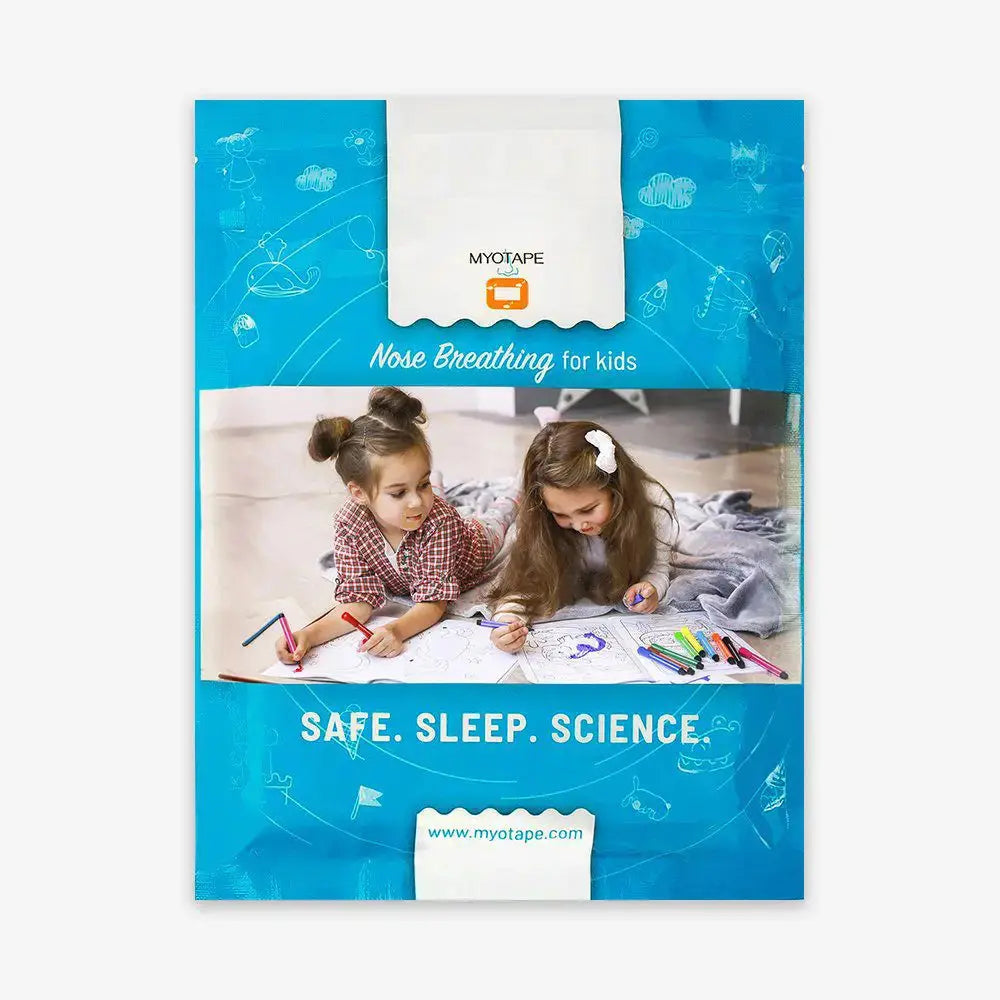
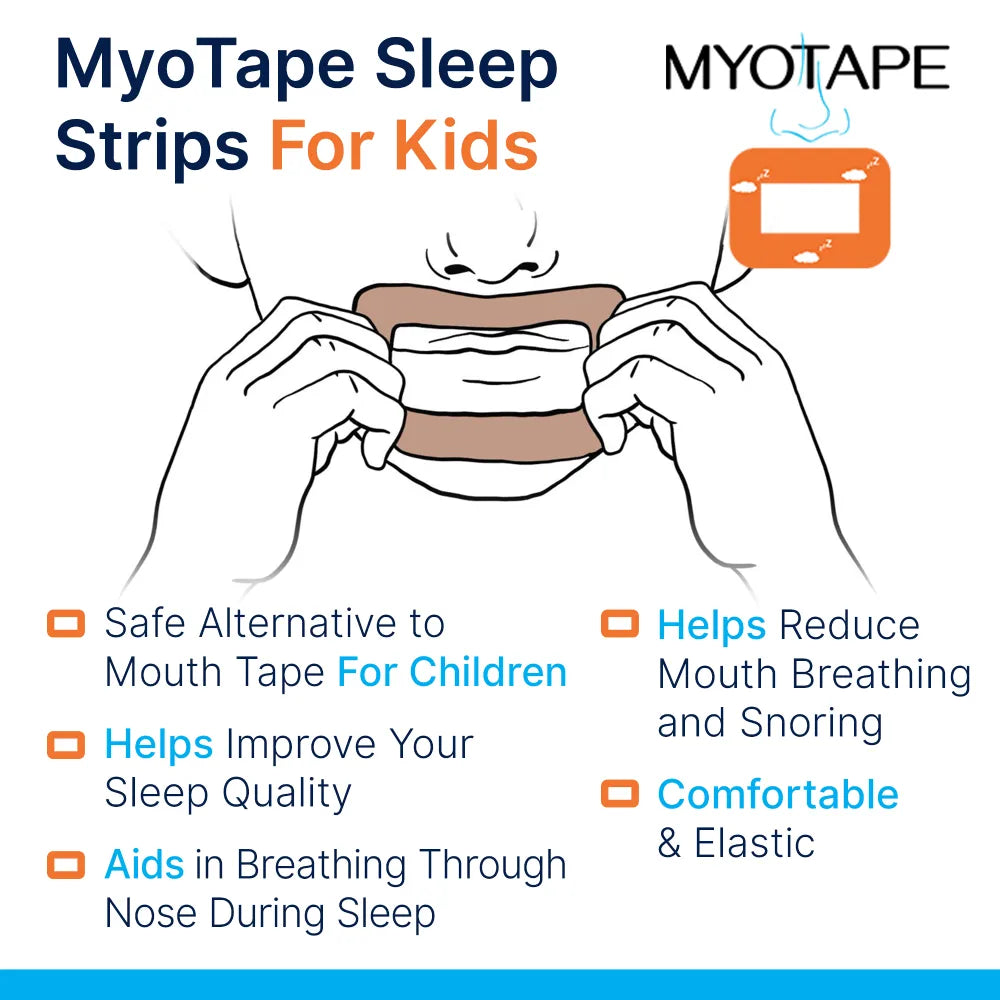
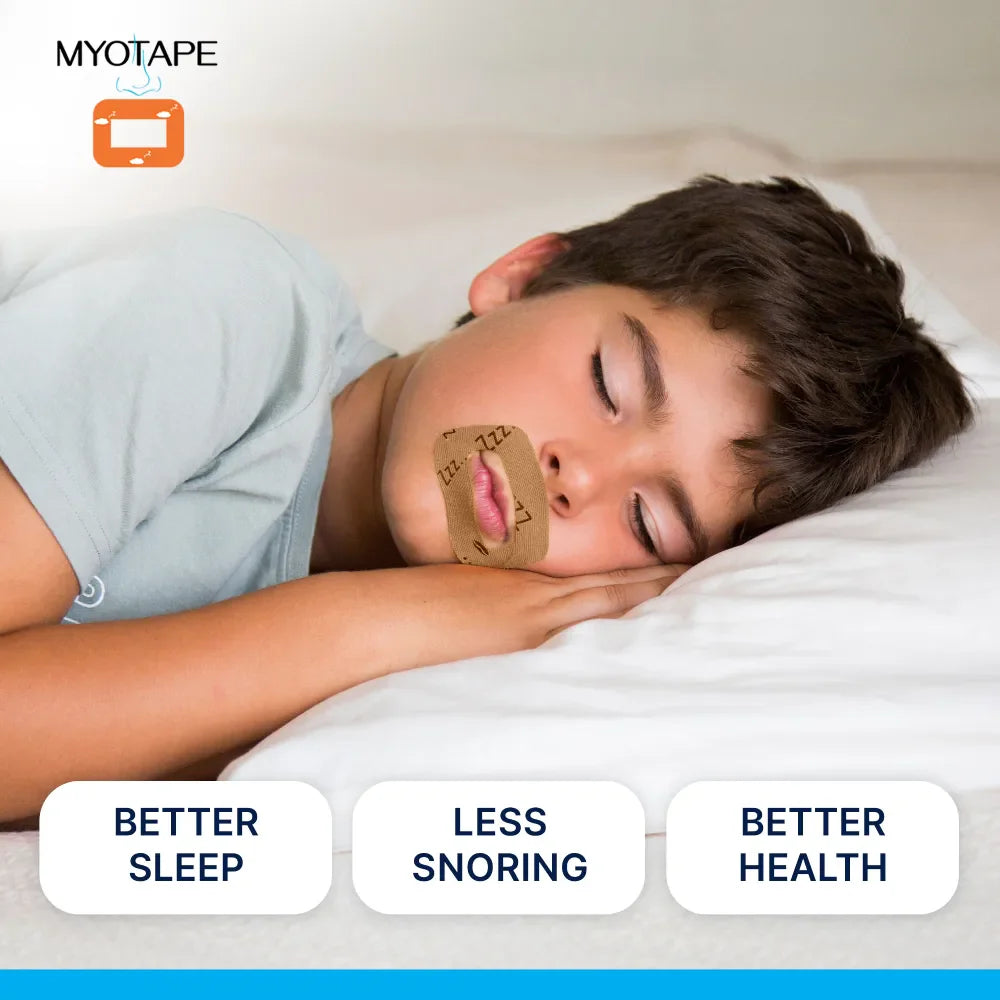
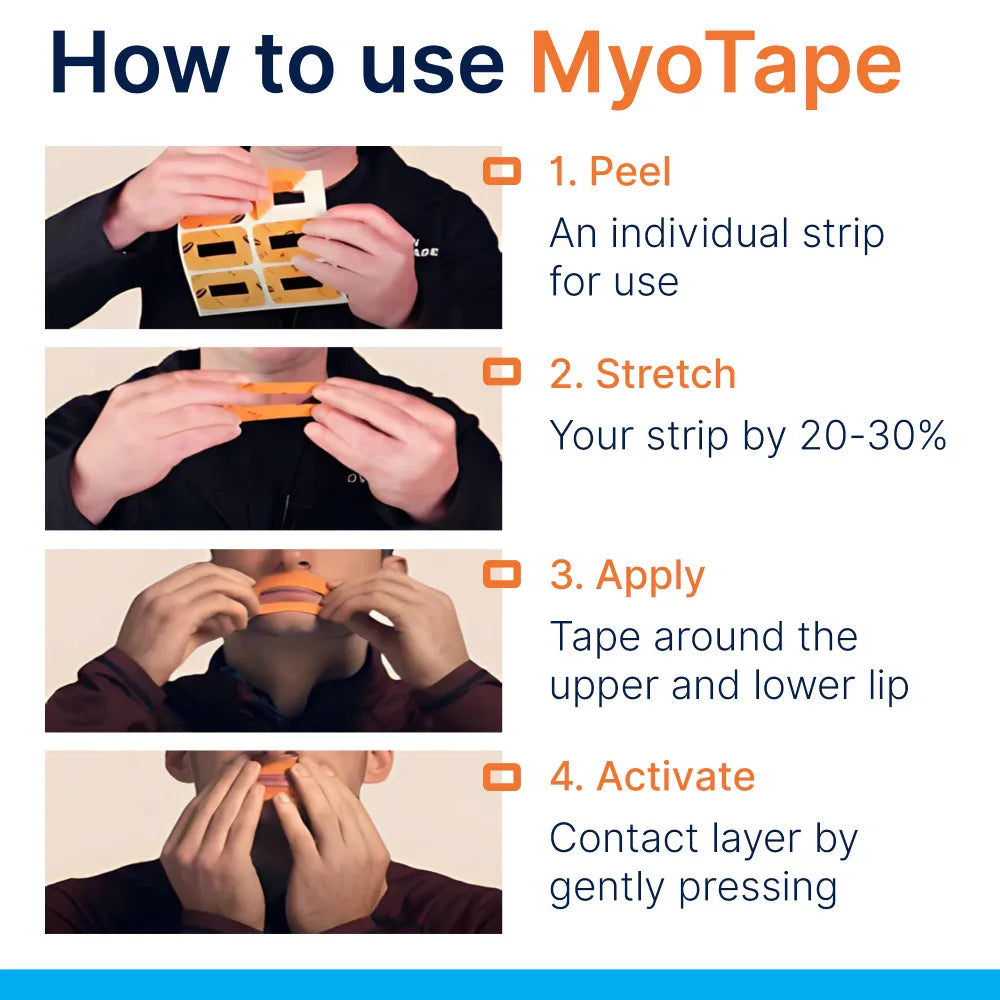
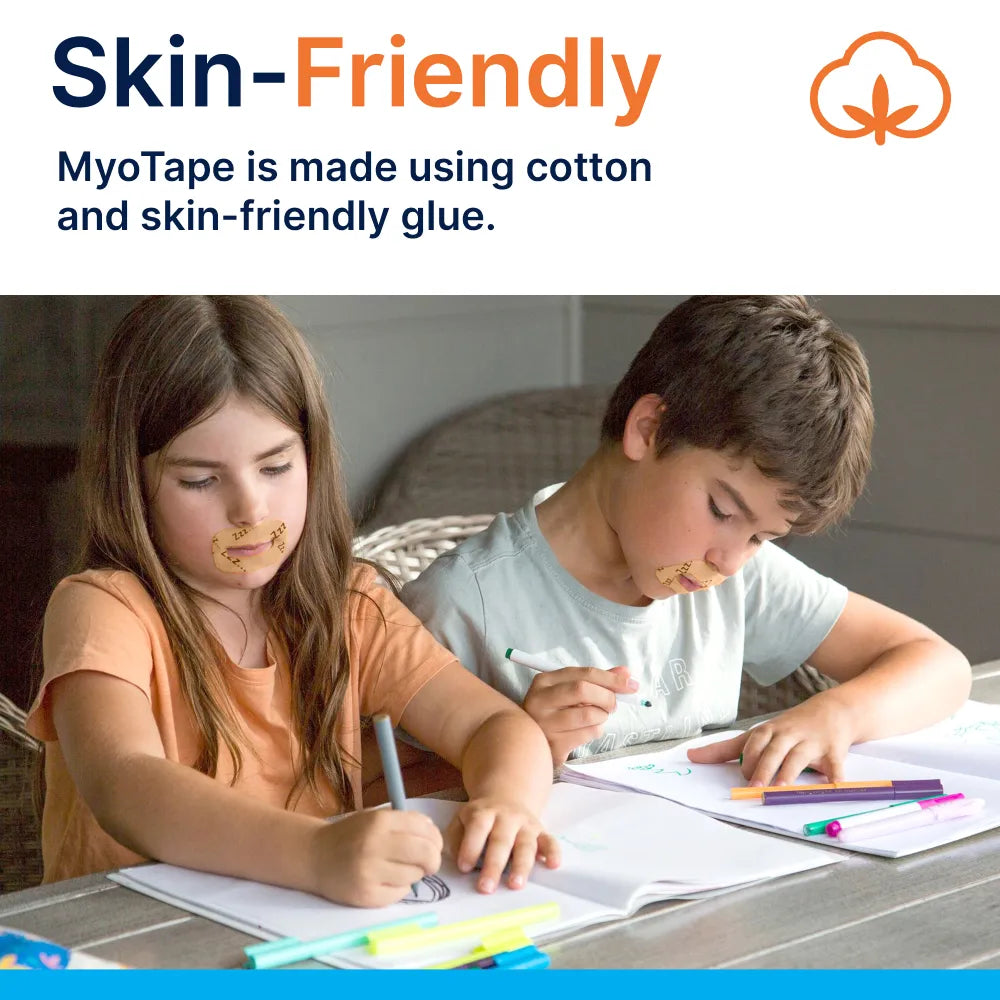










0 comments